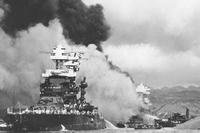When Norwood Penrose Hallowell graduated from Harvard in 1861, he was one of the school’s top athletes: a dominant swimmer and member of the rowing crew that beat rival Yale in what’s now called the Harvard-Yale Regatta.
With the Civil War raging in July 1861, Hallowell, a lifelong Quaker and abolitionist, joined the Union Army as an officer in the 20th Massachusetts Volunteer Infantry. By October of that year, Hallowell was in combat against Confederate forces at the Battle of Ball’s Bluff, Virginia.
Ball’s Bluff was one of the Civil War’s earliest battles, and under the command of Gen. George B. McClellan, the Union Army was not performing against the rebellion as well as many in the North expected. Ball’s Bluff was just one of the early fights that highlighted the Union’s lack of preparation.
It came just a few months after the First Battle of Bull Run, as McClellan and the Union prepared to make their first strike into the heart of the Confederacy: Virginia. The Union was on its way to Dranesville to determine what was happening at Leesburg, a town that had seemingly just been abandoned by the enemy.
Once in the area, Union troops encountered a company of the 17th Mississippi Infantry. Col. Edward D. Baker ordered every troop he could find to cross the river and engage the enemy, but he didn’t know there weren’t enough boats for all of them. The lack of boats created a bottleneck at the river crossing as the Union forces engaged the Confederates on the other side.
The Union troops were restricted in their position around Ball’s Bluff, a position that became a shooting gallery for the Confederate forces. Union soldiers began to fall back to the river, which became a figurative graveyard for many of them. The lack of boats led to many of the soldiers waiting on the river banks, taking fire from the enemy.
Hallowell and his strong swimming ability didn’t have to wait for a boat. After leading skirmishers to the Confederate line to buy time for the boats, he dove into the Potomac, swam across the river, built a raft and made several trips back and forth to help the evacuation. His quick thinking and athletic ability earned him a promotion to captain.

By 1863, Hallowell was a colonel, leading United States Colored Troops in the 55th Massachusetts Infantry in taking Fort Wagner in South Carolina. He was soon discharged due to wounds suffered at the Battles of Glendale and Antietam the year prior.
After the war, he moved to New York City and went into business with his brother. Later, in Boston, he became a wool broker and the president of a bank. He also would write a book on the Black soldiers who fought under his command during the Civil War. He died at age 74 in 1914.
-- Blake Stilwell can be reached at blake.stilwell@military.com. He can also be found on Twitter @blakestilwell or on Facebook.
Want to Know More About Veteran Jobs?
Be sure to get the latest news about post-military careers as well as critical info about veteran jobs and all the benefits of service. Subscribe to Military.com and receive customized updates delivered straight to your inbox.
















